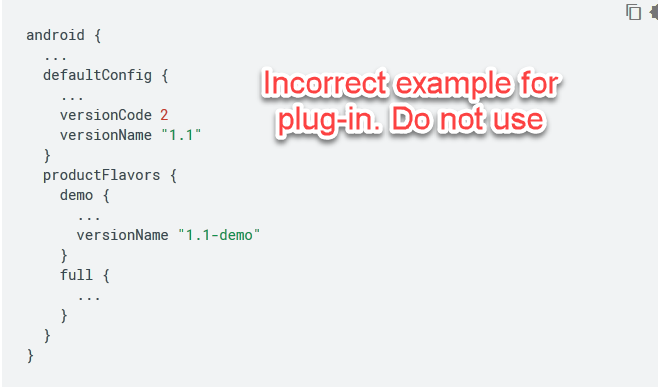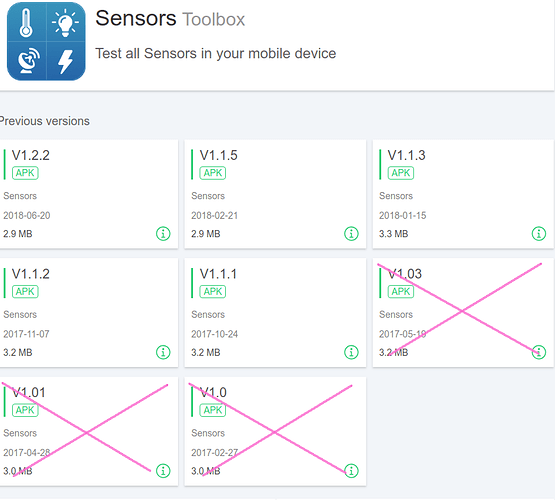When you submit a plug-in to the THETA Store, you need to specify a versionName in your build.gradle file.
The format is specified on the RICOH site and has stricter requirements than the Android document example.
The correct format is explained here:
Version Information
The version of the plugin is designed using a number and a decimal point, with the major version using 2 digits or less, the minor version using 2 digits or less, and the build number using 4 digits or less. For example: “12.34.5678”
The Android documentation on developer.android.com provides this:
The primary difference between the Android documentation and the RICOH documentation is that unlike an Android application for a phone, the RICOH THETA plug-in requires a string of three numbers separated by periods for the versionName. For example
versionName
This is a string
correct
1.1.2 is correct.
1.1.38 is correct
not correct
1.1 is not correct
1.1-demo is not correct
1 is not correct
versionCode
The versionCode is an integer. This is incremented for your reference as to what build you’re own. If you you’re on build 23 of the first version of your plug-in, set the versionCode to integer 23 and the versionName to string “1.0.23”
1 Like
Thanks for posting this. Very useful to get the exact details.
The problem I had earlier is that although the RICOH documentation correctly specifies the format, it doesn’t provide an example of the Gradle file. The official Android documentation does provide a nice set of examples. Unfortunately, the versionName specification in the official Android documentation is more flexible than the RICOH requirement. Thus, if you follow only the Android documentation, it may not conform to the RICOH requirement. In this example, “1.1” might be okay for Android mobile apps, but for a RICOH plug-in, it needs to be “1.1.0” or “1.1.1”
In the example below, for an Android mobile app, I’ve put an X through the the versions that wouldn’t be accepted for a RICOH THETA plug-in. It’s also possible that the newer convention is to always include the build number in the versionName and that the example on the official Android documentation site is out of date.
Picking another app at random, it doesn’t seem like the format is standardized. It’s possible that the naming convention is specific to Ricoh. I think it’s a good thing. We just need to help get the word out with examples or 1:1 help when people like me who skim through the RICOH documentation too quickly and go to the Android documentation for examples.


